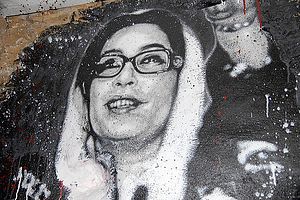Former Pakistani Prime Minister Benazir Bhutto died in a suicide attack 10 years ago at a campaign rally in Rawalpindi. A number of reports investigating Bhutto’s death reveal that the main suspects of the tragic incident are unlikely to be brought effectively to justice so long as the investigation remains vulnerable to the influence of state institutions.
After Bhutto’s tragic death, her widower Asif Ali Zardari led the Pakistan People’s Party (PPP) to victory in 2008. In the 2013 parliamentary elections, the Pakistan Muslim League Nawaz (PML-N) emerged as the most popular political party, winning 126 National Assembly seats, while the Pakistan Tehreek-e-Insaf (PTI) emerged as the second most popular party in Pakistan. PPP, whose last term in office was marred by repeated allegations of widespread corruption and bad governance, came second on the number of seats won and third in terms of the overall popular vote.
Now, going into the next general elections, the PPP faces insurmountable electoral and other challenges all across the country.
By all accounts, the PPP has virtually been restricted to the province of Sindh, the party’s traditional stronghold. With the next general elections a few months away, it doesn’t look like that the party is in a position to effectively revive its old electoral base beyond rural Sindh and some urban constituencies of the province.
One of the main reasons that PPP has lost its longstanding popular support base all across Pakistan is due to the party’s shift away from its original socialist and progressive commitments as the central premise of electoral politics, which brought it into the national limelight in the first place. Moreover, apathy on the part of the party’s current leadership is evident from the fact that the organization has done nothing to reach out to the party’s disillusioned electoral base with a genuine intent to revive the party on Bhutto and her father’s vision and mission. For now, the focus of the party appears to be nothing more than serving an opportunist group of landed political elites that are using Bhutto’s legacy and name for political gains.
An unsurprising addition to the party’s ranks has been the introduction of Benazir Bhutto’s son, Bilawal Bhutto Zardari, who is also the next political heir of the party, in active politics. However, it’s unlikely that Bhutto’s son can revive the party’s traditional support base with a political approach that reaches out to its voter base with an aim of highlighting the party’s own victimization at the hands of the state and other non-state actors.
The party has held a number of rallies in Punjab, particularly in areas where the party’s leadership believes that its vote base remains intact. Without a doubt, the PPP still retains a considerable presence in Southern Punjab and the Seraiki segments of the province where it has led demands for the creation of a new province. However, that electoral base also remains under threat from PTI and other smaller regional political parties.
In other parts of Punjab — particularly central, western and northern Punjab — the ruling party has a greater support base. With the PTI leading the face of political opposition in Punjab and other parts of the country, it’s unlikely that PPP will find significant ground to retain back its lost voter base or build momentum to become main political opposition force. Meanwhile, the PTI and other smaller political groups in urban and rural Sindh are posing a challenge to PPP’s strongholds in the province. It remains to be seen whether the party can still easily retain its Sindhi electoral base that continues to preserve its political significance and relevancy.
The party has weakened internally with PPP’s old ideologues leaving the party or forming their own political forward blocks. The party’s recent attempts to appease the Islamist voter base in Punjab is not likely to make any significant electoral difference due to two reasons. First, the province’s ideological voter base is highly decentralized and remains divided into sectarian lines. Second, such electoral bases already remain in alliance with other politico–religious groups in the province and are aggressively active to make inroads into the country’s mainstream politics. However, such an approach can further damage the party’s legacy, for the PPP has always carried an agenda that rejects religious extremism and always opposed fundamentalist forces in the country.
With the party’s erstwhile trusted Punjabi voter base becoming disillusioned, it’s unlikely that the party will find place at the federal level anytime soon. The party needs to revert back to its original policy agenda of focusing on socialist ideals and principles to serve the masses. The current policy of pursuing “opportunist” politics will ruin the party’s remaining credibility and future in electoral politics.

































